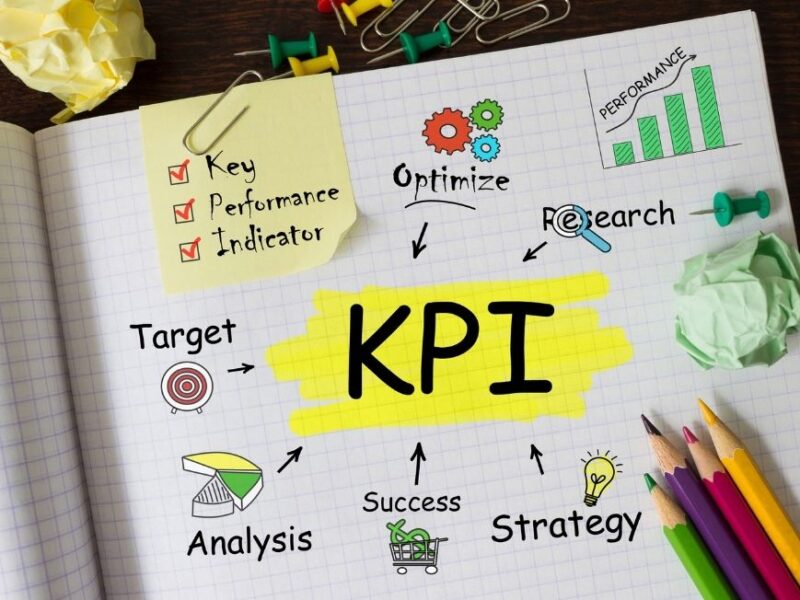On this page you will read detailed information about Key Performance Indicators.
In the fast-paced world of business, you might often hear the term “KPI” thrown around in strategy meetings or performance reviews. Yet, understanding what a Key Performance Indicator truly encompasses is crucial for steering your organization towards success. KPIs are not just numbers; they are powerful tools that provide insight into how effectively your company is achieving its key objectives. By delving into the essence of KPIs, you can better align your strategies, make informed decisions, and ultimately drive growth. Join us as we unravel the complexities of KPIs and explore how they can transform your business dynamics.
What is KPI: An In-Depth Explanation
Defining Key Performance Indicators
In the business realm, a Key Performance Indicators (KPI) is a measurable value that demonstrates how effectively a company is achieving its key business objectives. Organizations use KPIs at various levels to evaluate their success at reaching targets. High-level KPIs may focus on the overall performance of the enterprise, while low-level KPIs may focus on processes in departments such as sales, marketing, HR, or support.
Understanding what is KPI means grasping the essence of these metrics that help decision-makers assess their strategic, operational, and financial outcomes. KPIs are more than just numbers; they are critical instruments that translate complex measures into understandable data. A well-designed KPI can act as a compass, guiding a company toward its strategic objectives.
Characteristics of Effective KPIs
Not all metrics qualify as KPIs. To be truly effective, a KPI should be relevant, actionable, and quantifiable. It should align closely with the organization’s strategic goals and be readily interpretable by the stakeholders involved.
- Relevance: A KPI must be directly tied to the strategic goals of the business. It should prioritize what is most important for the organization’s success.
- Actionable: Good KPIs inspire meaningful action. They should inform and motivate teams to take steps that drive the organization closer to its objectives.
- Quantifiable: KPIs need to be measurable. Without quantifiable data, it’s challenging to track progress or determine success.
Choosing the Right KPIs
Selecting the right KPIs requires a deep understanding of what drives your business forward. It’s essential to focus on metrics that truly reflect the health and performance of your organization. For instance, if customer satisfaction is a strategic priority, then a KPI might be the Net Promoter Score (NPS) or customer retention rate.
Ultimately, the power of KPIs lies in their ability to distill large amounts of data into actionable insights, enabling businesses to make informed decisions that lead to sustained growth and success.
The Importance of Key Performance Indicators in Business
Measuring Success Through Objective Metrics
The role of Key Performance Indicators (KPIs) in business is pivotal, acting as a compass that guides your organization towards achieving strategic goals. By defining and tracking KPIs, you gain a concrete way to evaluate success through objective metrics rather than relying on subjective judgment. What is KPI, if not a tool to provide clarity and focus? These metrics allow you to measure progress in areas that are crucial to your organization’s growth and success.
Driving Informed Decision Making
KPIs empower you to make informed decisions. In today’s fast-paced business environment, having instant access to data-driven insights is invaluable. With KPIs, you can spot trends, identify potential issues early, and pivot strategies as needed. Key Performance Indicators make it possible to align your tactical actions with overarching business objectives, ensuring that every decision contributes to your long-term vision.
For example, a sales team might track conversion rates as a KPI, enabling them to adjust their approach in real-time to meet targets. Without such precision, decisions become guesses rather than calculated moves.
Enhancing Accountability and Performance
Another critical advantage of KPIs is their role in enhancing accountability. Clear, quantifiable goals foster a culture of performance, as employees understand what is expected and how their contributions are measured. This transparency leads to improved performance across all levels of an organization.
When teams are aware of their KPIs, they are more likely to collaborate effectively and strive for continuous improvement. This aligns individual performance with company goals, creating a cohesive effort towards shared success.
In summary, a well-defined Key Performance Indicator not only shows you where you stand but also directs your path forward, ensuring that your business operates efficiently and effectively in pursuit of its objectives.
Common Types of KPIs and When to Use Them
Financial KPIs
Financial KPIs are often the cornerstone of evaluating a company’s economic success. These indicators, such as net profit margin, revenue growth rate, and return on investment (ROI), provide insight into financial health. They are particularly valuable for stakeholders keen on understanding profitability, efficiency, and the financial trajectory. Deploy financial KPIs when you need to assess overall financial performance or when planning long-term strategies. By analyzing these indicators, you gain a clearer picture of how well your business is converting resources into revenue.
Operational KPIs
Operational KPIs focus on the internal processes that drive your business. Metrics such as cycle time, productivity rate, and quality index fall under this category. These KPIs are crucial for managers aiming to enhance operational efficiency and identify bottlenecks within processes. Employ operational KPIs to monitor the day-to-day effectiveness of business operations. For instance, a manufacturing company might track production cycle times to optimize workflow and reduce delays, ultimately leading to improved output and customer satisfaction.
Marketing KPIs
In the realm of marketing, KPIs such as customer acquisition cost (CAC), conversion rates, and return on marketing investment (ROMI) play a vital role. These indicators are essential for assessing the impact and efficiency of marketing campaigns. Use marketing KPIs to gauge campaign performance, customer engagement, and brand visibility. By understanding what is a Key Performance Indicator in marketing, you can tailor strategies to boost engagement and drive sales, ultimately ensuring that your marketing efforts align with larger business objectives.
Customer KPIs
Customer KPIs, including customer satisfaction scores, net promoter scores (NPS), and customer lifetime value (CLV), are vital for understanding client relationships and retention. These metrics offer insights into how well your products or services meet customer expectations. Use customer KPIs to measure and improve customer experience, which is key for fostering loyalty and ensuring repeat business. For example, tracking NPS can reveal how likely customers are to recommend your company, providing a direct link to brand reputation and customer satisfaction.
In the previous post, we had shared information about Understanding Key Digital Marketing Metrics: CTA, CTR, CPC, CPM, so read that post also.
How to Develop Effective KPIs for Your Organization
Align KPIs with Strategic Objectives
To begin developing effective Key Performance Indicators (KPIs) for your organization, it’s crucial to align them with your strategic objectives. Consider your organization’s mission and long-term goals. Each KPI should serve as a measurable benchmark that reflects the success of these overarching aims. For instance, if your goal is to enhance customer satisfaction, a pertinent KPI might be the Net Promoter Score (NPS). By ensuring that KPIs echo strategic objectives, you create a roadmap that guides your team towards achieving organizational growth and success.
Ensure KPIs Are Specific and Measurable
When selecting KPIs, specificity and measurability are paramount. Vague indicators offer little insight into performance. Instead, opt for KPIs that are clear and quantifiable. For example, instead of a KPI like “improve sales,” choose a specific target such as “increase sales by 10% over the next quarter.” This clarity not only provides a clear target but also facilitates easier tracking and analysis, enabling you to adjust strategies promptly if necessary.
Involve Relevant Stakeholders
Developing KPIs should not be a solitary task. Involve relevant stakeholders to provide diverse perspectives and insights. Engaging team members from different departments encourages a holistic approach, ensuring that the KPIs are realistic and attainable. Collaborative efforts in setting KPIs also promote ownership and accountability, as team members are more likely to be motivated to achieve targets they helped design.
Regularly Review and Adjust KPIs
The business environment is dynamic, and so should be your KPIs. Regularly review the effectiveness of your KPIs and adjust them in response to changing conditions or priorities. This adaptability ensures that your KPIs remain relevant and continue to drive organizational performance towards your key objectives. By maintaining a flexible approach, you safeguard your organization’s ability to thrive in an ever-evolving marketplace.
Key Performance Indicator Examples Across Different Industries
Retail Industry
In the dynamic world of retail, Key Performance Indicators (KPIs) serve as vital tools to gauge success and efficiency. Retailers often focus on sales figures, conversion rates, and customer satisfaction scores. For instance, a store’s conversion rate can provide insights into how well sales strategies turn browsers into buyers. Additionally, customer satisfaction scores, often collected through post-purchase surveys, highlight areas for improvement in the shopping experience. These KPIs help businesses refine their approaches to meet consumer demands effectively.
Healthcare Sector
In healthcare, KPIs play a crucial role in ensuring patient care and operational excellence. Essential performance metrics include patient wait times, treatment success rates, and patient safety measures. For example, patient wait time is a critical indicator of service efficiency and can directly affect patient satisfaction. Meanwhile, treatment success rates offer insights into the effectiveness of medical procedures and protocols. By focusing on these KPIs, healthcare providers aim to enhance service delivery and patient outcomes.
Financial Services
Financial institutions rely on Key Performance Indicators to monitor stability and growth. Common KPIs in this sector include return on investment (ROI), net profit margin, and customer acquisition cost. ROI gauges the profitability of investments, while net profit margin reflects the overall financial health of the organization. In contrast, customer acquisition cost helps businesses understand the expense involved in gaining new clients. These KPIs are crucial for maintaining financial soundness and strategic growth.
Manufacturing Industry
In manufacturing, KPIs are indispensable for measuring efficiency and productivity. Key metrics include production downtime, overall equipment effectiveness (OEE), and defect rates. Production downtime indicates potential losses in productivity, while OEE provides a comprehensive view of manufacturing efficiency. Defect rates highlight quality control issues, ensuring that products meet industry standards. By leveraging these KPIs, manufacturers can optimize operations and maintain high-quality production standards.
Understanding these specific Key Performance Indicators across various industries can empower organizations to improve operations and achieve strategic objectives effectively.
Conclusion
In navigating the intricate landscape of business performance, understanding Key Performance Indicators (KPIs) is paramount. By leveraging KPIs, you empower your organization to measure progress, align strategies, and drive growth with clarity and precision. These metrics serve not just as mere numbers, but as guiding beacons that illuminate your path toward strategic success. As you continue to harness the power of KPIs, you will find yourself better equipped to make informed decisions that propel your organization forward. Embrace the potential of KPIs, and transform them into a cornerstone of your business’s success strategy.
Disclaimer
The content published on the Marketyra blog is for educational and informational purposes only. While we strive to share accurate and up-to-date digital marketing tips, strategies, and trends, we do not guarantee any specific results. Readers are advised to use their own judgment before applying any tips or advice provided. Marketyra is not liable for any losses, damages, or issues arising from the use of blog content.
So friends, today we talked about Key Performance Indicators, hope you liked our post.
If you liked the information about Key Performance Indicators, then definitely share this article with your friends.
👉 Need help with SEO or digital marketing services?
Feel free to call us at 📞 +91-9306925861, email us at 📧 admin@marketyra.com to get in touch!






